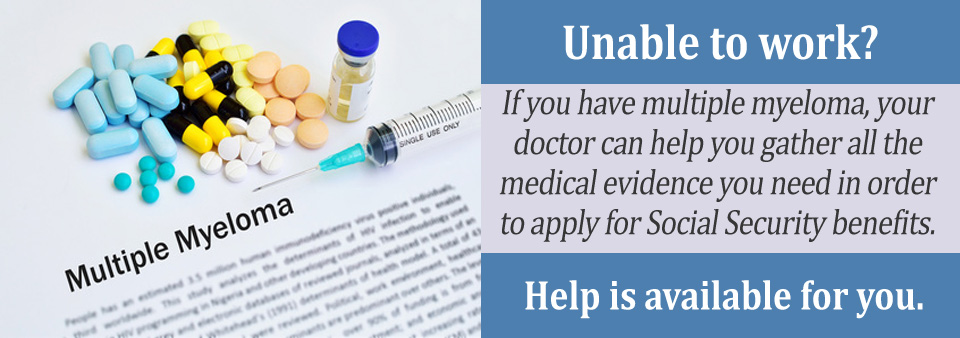It often starts with experiencing mental and physical fatigue before it morphs into a debilitating form of cancer that triggers acute bone pain in the chest and/or the spine.
Multiple myeloma does not receive much publicity, but it is a potentially debilitating disease that can turn your life upside down.
Frequent infections and considerable numbness in your legs make it impossible to work a full time job, especially if the job requires prolonged physical labor. How do you pay the bills when dealing with multiple myeloma?
The answer lies in a safety net program managed by the Social Security Administration (SSA).
Getting Financial Help for Multiple Myeloma
If you have received a diagnosis for multiple myeloma, turn to the SSA to receive financial assistance that covers the costs of medical bills, as well as daily expenses such as food and clothing.
The SSA runs a program called Social Security Disability Insurance (SSDI) that provides financial help for multiple myeloma patients.
You have to submit an application to receive financial benefits that includes persuasive evidence such as medical documentation and statements made by the team of doctors that treated the symptoms of the form of cancer.
The SSA refers to a set of guidelines called the Blue Book to determine SSDI eligibility. Multiple myeloma and the associated symptoms list under Section 13.07 of the Blue Book.
The SSA not only wants to confirm the symptoms of the disease, but also that the symptoms meet the criteria established for severity.
To receive approval for an SSDI claim, you must have not worked for the past 12 months.
You can waive the time constraint if multiple myeloma has progressed to the point that your physician diagnoses your medical condition as terminal.
The SSA requires SSDI applicants to work in specified occupations to qualify for financial assistance.

Does Medicare Influence Your SSDI Application?
When Americans reach the age of 65, they become eligible for Medicare health care insurance coverage.
Since some SSDI recipients for multiple myeloma have turned 65 years old, they want to know how SSDI benefits impact Medicare coverage.
The answer is you have to wait two years for Medicare to kick in after you become eligible for the federal safety net program.
You should consider Medicare as a fall back safety net if your multiple myeloma symptoms diminish or disappear.
Medicare covers health care costs, the not the income lost because you can no longer work.
SSA Back to Work Programs
The SSA wants disabled workers to become self-sufficient for two reasons. First, the federal agency works with a limited budget.
Taking workers off SSDI assistance frees up more money for other disabled American workers.
Second, self-sufficiency helps former SSDI recipients improve their self-confidence, which boosts morale and mental well-being.
The SSA manages two work transition programs to help disabled workers literally get back on their feet.
Schedule a Free Case Evaluation
When you complete an application for SSDI benefits, you can expect the SSA to review it with a fine tooth comb.
This means your application must include overwhelming evidence that demonstrates how multiple myeloma has negatively impacted your ability to hold down a full-time job.
An accomplished Social Security attorney can conduct a free case evaluation to determine the merit of your SSDI application. Your lawyer also knows how to file an appeal in case the SSA denies your claim.